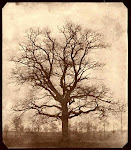The ship Le Saint-Jean-Baptiste captained by Pierre Guillebaud departed Dieppe at the end of June in 1671 with 120 girls. Listed among the 104 Filles du roi from the Paris area and northern France was our ancestor:
A normal crossing took two and a half months. The Le Saint-Jean-Baptiste arrived in Montreal in August 1671. Upon arrival the Filles du roi were entrusted to a woman, from France or the colony, who protected them and kept them under strict discipline until married where she would attend and sign as witness to the nuptial agreements.
"The St-Jean Baptiste" was a 295-300 barrel vessel. The dimensions of a boat of 300 barrels would have been 76 feet in length, 27.33 feet in width and 10.5 feet in depth if using George Fournier’s method which he described in his book, Hydrographie, published in 1643. This type of boat was called a galleon and could be armed if needed.

On its return to Dieppe on 10 January 1672, the vessel brought back from Nouvelle-France beaver skins, moose, stone, wood, pitch, and other rare items.
Jeanne Marguarite Chevalier is the 2nd of our ancestors to be listed as a passenger on this ship.


















